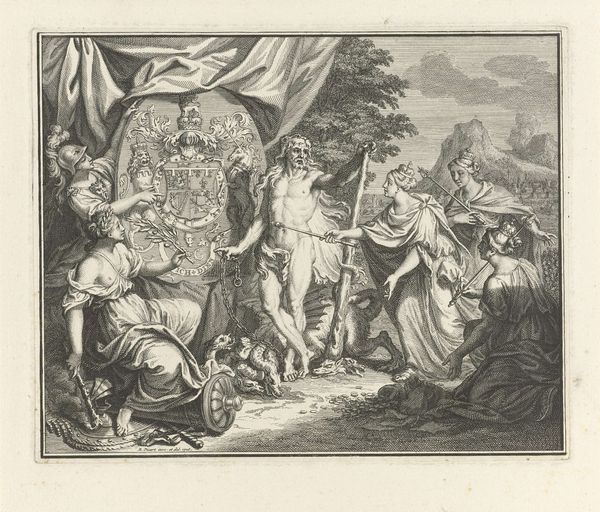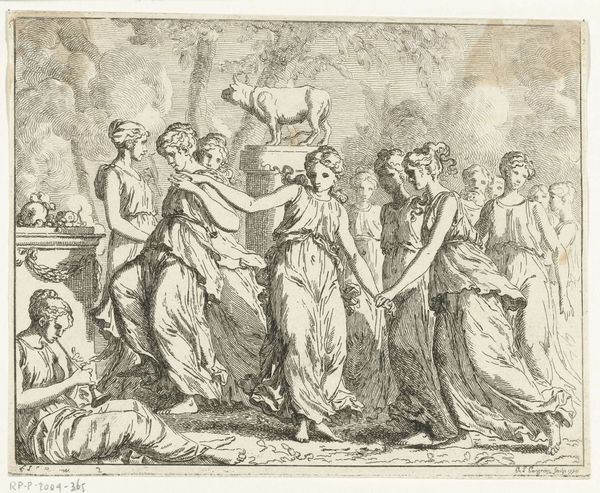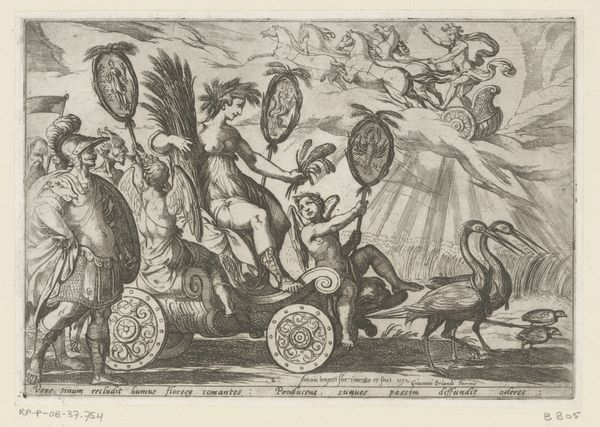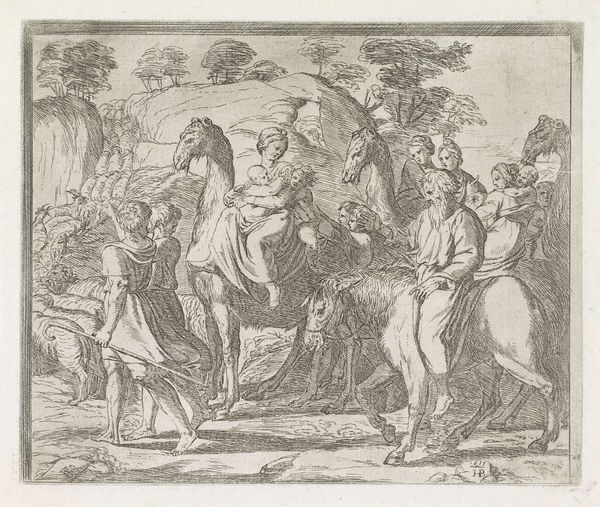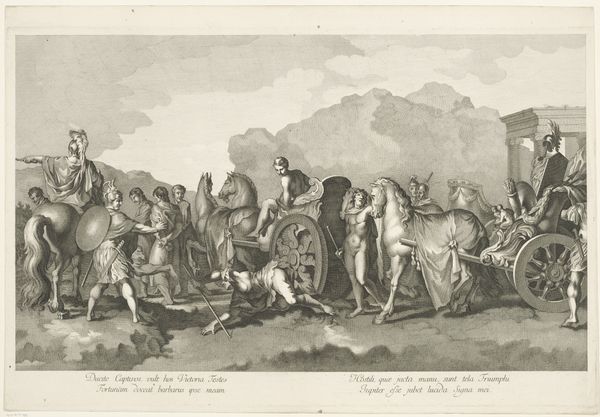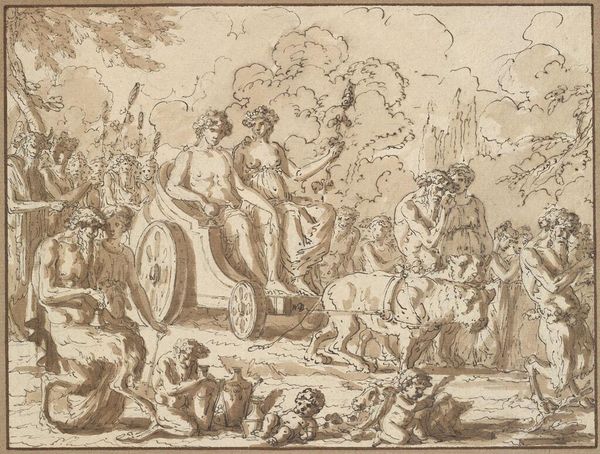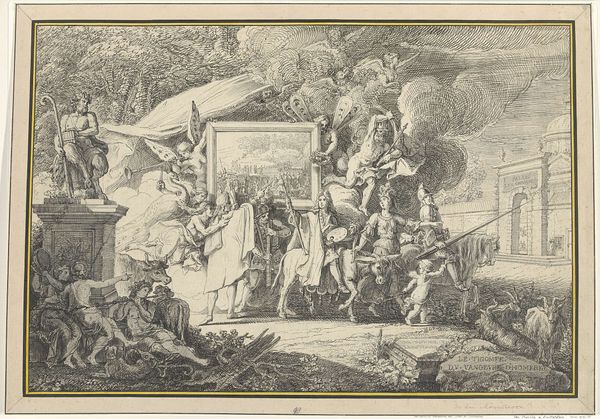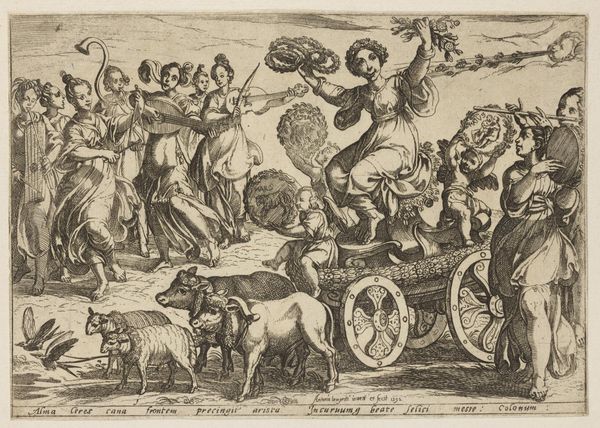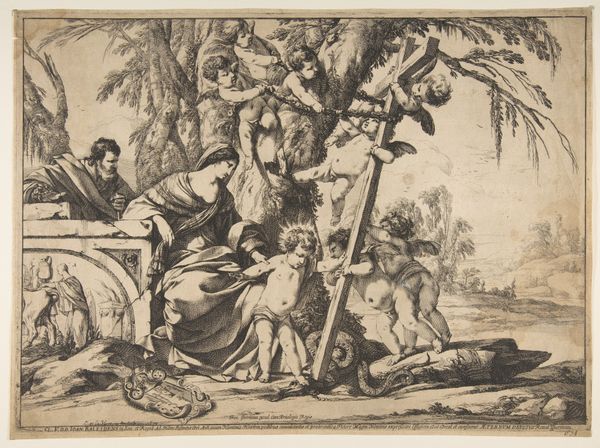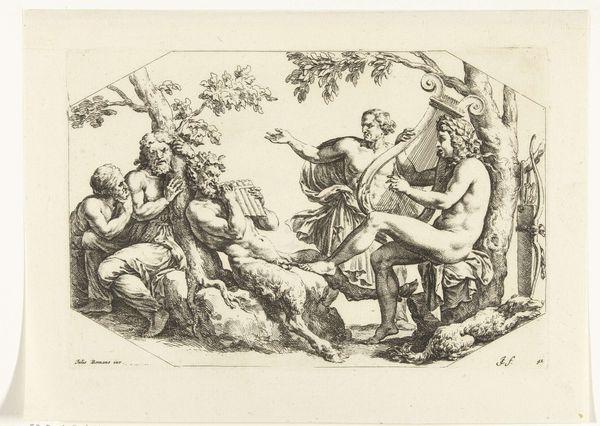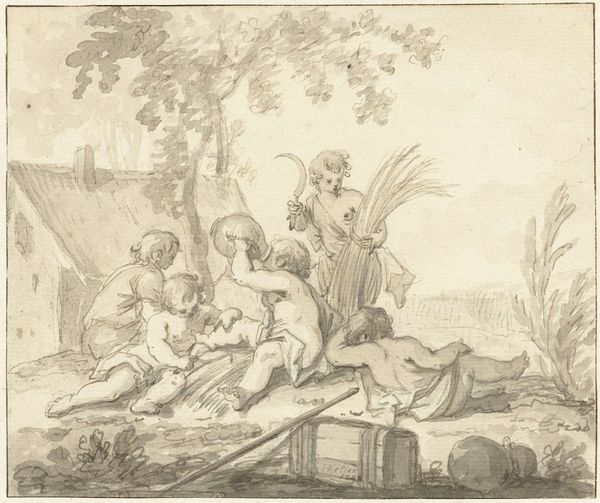
drawing, engraving
#
drawing
#
neoclacissism
#
allegory
#
pen drawing
#
history-painting
#
engraving
Dimensions: height 131 mm, width 165 mm
Copyright: Rijks Museum: Open Domain
Curator: This pen and ink drawing, titled "Ceres and Nymphs with Wheat Ears," was created around 1770 by Philippe Louis Parizeau. It's currently held here at the Rijksmuseum. What strikes you about it initially? Editor: The stark contrast! All the forms are so precisely delineated; the engraving work here presents a very formal atmosphere that simultaneously feels flat and deeply dimensional. Curator: Indeed. Parizeau was working within the Neoclassical movement, which emphasized clarity, order, and a return to classical antiquity. You see that especially in the idealized figures and the allegorical subject matter. Editor: And this theme fits in with the stylistic choices—it projects such seriousness, even in this fairly simple drawing. Look at the deliberate lines etching the folds of fabric, the considered composition focusing our eye on Ceres... Curator: The goddess Ceres, of course, represents agriculture, fertility, and motherhood. Surrounding her are nymphs, often associated with nature. Note their interaction with the wheat ears—symbols of abundance and prosperity. In the 18th century, imagery of prosperity was popular among the aristocratic elites in anticipation for continued growth and a desire for such benefits. Editor: It makes me think about value, literally what society values and visually how those priorities manifest in a work like this. Ceres is the focal point, enthroned on her wheeled platform with attendants all around. And below that throne is an interwoven grouping of snakes... Curator: That serpent element is compelling. In classical imagery snakes can signify regeneration but also earthly bonds or challenges. Here, they seem part of the landscape itself, something she is gliding over with great intent as she enters or exits a particular scene or moment. It adds a certain dynamism to an otherwise still image, don’t you agree? Editor: Absolutely. While the composition seems rooted in tradition, Parizeau does something distinctive. The line work itself is almost vibrating! You feel as if at any moment, the scene could morph before your eyes. Curator: The engraving’s crispness truly accentuates its clarity. Looking back to this piece in its historical context underscores its connection to wider dialogues on national strength and wealth. It demonstrates an engagement of society during that moment. Editor: It’s wonderful how the image manages to weave those grand public ideas with what still feels intimate in its rendering. You could look at it for hours.
Comments
No comments
Be the first to comment and join the conversation on the ultimate creative platform.
